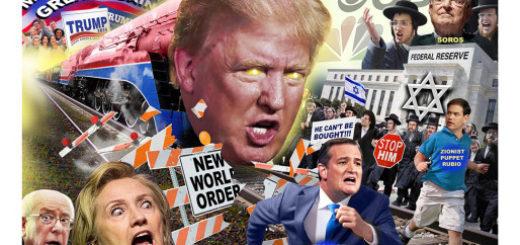BRICs Assets Go Through A Correction Similar to the Stock Market Correction in 1987
As BRIC fund assets collapse, Jim O’Neill is keeping away
SECTIONSAs BRIC fund assets collapse, Jim O’Neill is keeping awayBy Nishant Kumar and Loukia Gyftopoulou, BloombergLast Updated: Mar 26, 2022, 12:19 PM ISTSHAREFONT SIZESAVEPRINT1COMMENTSynopsis
Money managers scrambled to start funds anyway. The likes of Schroders Plc and Franklin Templeton — along with Goldman Sachs Asset Management — gobbled up billions of dollars from clients looking to profit by combining investments in Brazil, Russia, India and China. That marketing ploy has come crashing down and now faces an existential crisis.

When Jim O’Neill devised the BRIC acronym at the turn of the century, the former Goldman Sachs Group Inc. chief economist did not intend the catchy phrase to be exploited for marketing investment funds.
Money managers scrambled to start funds anyway. The likes of Schroders Plc and Franklin Templeton — along with Goldman Sachs Asset Management — gobbled up billions of dollars from clients looking to profit by combining investments in Brazil, Russia, India and China. That marketing ploy has come crashing down and now faces an existential crisis.
Russia’s invasion of Ukraine has made the former uninvestable, with MSCI Inc. removing it from benchmarks including the BRIC Index. China, which represents a major slice of this benchmark, is also slowing and has embarked on an unprecedented crackdown on technology companies that has led to sharp losses.
BRIC funds have lost 14.6% this year, while their combined assets have slumped by more than 90% from their peak to about $3 billion, according to data compiled by Bloomberg.
ET PRIME – POPULAR MARKET STORIES
 HDFC Bank’s underperformance makes it attractive. Should you buy now or wait a bit?
HDFC Bank’s underperformance makes it attractive. Should you buy now or wait a bit? Balaji Telefilms stock shines on brand Ekta Kapoor. Can she recreate her TV magic on OTT?
Balaji Telefilms stock shines on brand Ekta Kapoor. Can she recreate her TV magic on OTT? The pandemic couldn’t stop Tata Steel’s dream run. War, inflation, uncertainty may spoil the party.
The pandemic couldn’t stop Tata Steel’s dream run. War, inflation, uncertainty may spoil the party. What has brought KPIT Technologies, Tata Elxsi and LT Technology Services into the limelight suddenly?
What has brought KPIT Technologies, Tata Elxsi and LT Technology Services into the limelight suddenly? Check out which Nifty50 stocks analysts recommend buying this week
Check out which Nifty50 stocks analysts recommend buying this week Motherson Sumi Wiring to ride ‘higher premiumisation’ wave
Motherson Sumi Wiring to ride ‘higher premiumisation’ wave
Subscribe to ETPrimeThe collapse holds a ruthless lesson for investors on the perils of thematic funds. Combining four diverse, complex and risky emerging market countries in a fund was clever wordplay but not a smart bet. While the economies grew rapidly as predicted by O’Neill, stocks had mixed fortunes. The MSCI BRIC index now trails the S&P 500 over this century, and even lags behind the total returns for individual indexes for the four countries.

Video Player is loading.PlayUnmuteLoaded: 0%Fullscreen“Do not confuse the BRIC concepts,” O’Neill said in an interview. “My whole purpose of creating the acronym has nothing to do with investment.”
recommended byMYCHINETBacon Makes Everything Better, Even Deviled EggsLEARN MORE

Russia’s war has, of course, wider consequences. The ongoing devastation on the ground in Ukraine has triggered market volatility globally. Commodity prices have surged in response to sanctions imposed by Western countries to isolate the country. That has sparked inflationary fears for big commodity and energy consumers and importers such as India and China.
The market turmoil has even hurt hedge funds that are designed to prosper in both rising and falling markets, with money managers such as Autonomy Capital Research, H2O Asset Management and EDL Global Opportunities facing double-digit slumps. Many have been forced to mark Russian bets to zero.
The BRIC Promise
O’Neill’s paper, “Building Better Global Economic BRICs,” was published on Nov. 30, 2001 and focused on how the global economy would be driven by the growth of emerging markets in the following decades. He argued that policymaking forums such as the Group of Seven should be re-organized to incorporate BRIC representatives.
Fund managers took notice. Two of the largest surviving funds, Schroder International Selection Fund – BRIC and Templeton BRIC Fund, started in 2005, while Goldman Sachs launched its own fund the next year. The Schroder fund grew to more than $4 billion, while Templeton’s money pool amassed $3.3 billion by 2010.
But the second decade of the century started to take shine off, and now they’ve reached a calamity. The Schroder fund, which was managing $710 million at the end of February, has declined almost 16% this year, according to data compiled by Bloomberg. Templeton’s $450 million fund has slipped more than 14% after it marked Russian American depository receipts to zero when Russia’s markets closed, according to a person with knowledge of the matter.
Goldman Sachs, meanwhile, closed its money-losing BRIC fund in 2015 and merged it with a broader emerging-market fund, joining a string of others to take similar decisions. Bloomberg tracks only 74 surviving BRIC funds now. The same number have shuttered over the years, while dozens have been acquired or delisted, Bloomberg data shows.

BRIC funds’ long-term performance pales in comparison to U.S. stocks, which were powered by quantitative easing and the surge in technology stocks over the past decade or so.
But to Chetan Sehgal, portfolio manager of Templeton BRIC Fund, the grouping still offers long-term value even without Russia. Resource- and energy-rich Brazil could benefit from an ex-Russia world, he said. “Though China has slowed down, its path will very much depend on how it navigates the external environment as many of the internal reforms have already been enacted,” he added.
To others, though, the concept has lost its charm. Ed Park, the chief investment officer at U.K. wealth manager Brooks Macdonald, said Russia is uninvestable, Brazil has lots of political risk and his firm can get exposure to China outside BRIC funds. “I don’t see us investing in BRIC as a concept in the medium term,” he said. “The economic drivers of the constituents are not as correlated as when the term was coined and some of the countries we would choose to actively avoid.”
As for O’Neill, he stands by the idea that these economies are growing in size and influence. “Despite the problems that Brazil and Russia have, because of the enormous success of China, if you look at where they all are together, it is still feasible that by the mid 2030s, the BRICs could be bigger than the G6,” he said.
Still, he said he’s never invested in a BRIC fund, and never will.
Comment: If I had the money I WOULD invest in the BRICs cuz in the end it will be the U.S. Dollar & U.S. Economy which WILL Collapse thanks to all the Satanic Secret Society Traitors in our Gov’t. They are like worms in an apple.
WHY THE UNITED STATES MUST JOIN THE BRICS
A NEW INTERNATIONAL ORDER FOR MANKIND
 a LaRouchePAC digital report
a LaRouchePAC digital report
Add your name to the list of prominent signers who are calling for the U.S. to Join the BRICS
This report serves as an outline for what is, perhaps, the best opportunity the United States has been given in decades to regain its founding identity, by joining the new international order being created at this moment by a group of leading nations to move civilization forward into a new paradigm for mankind. The planet is truly at an existential crossroads, and without a dramatic change of policy from within the United States, away from the last fourteen years of the Bush/Obama presidencies typified by Wall Street bailouts and interventionist, Cold War-style warfare, the world could very well erupt into a Third World War.
Outlined here is a mapping of the new paradigm emerging around the BRICS nations (Brazil, Russia, China, India and South Africa), how the United States can join this revolutionary new dynamic, the intellectual and political leadership provided by Lyndon and Helga LaRouche over the last forty years to make this vision a reality, and an epistomological overview of where mankind, as a species, is headed were this new paradigm to envelop the entire planet.
CONTENTS
Introduction: There Are Only Two Alternatives For MankindI. A New International Order Has EmergedII. The Imperial System Is Dead and Must Be EliminatedIII. Concrete Opportunities for the U.S. to Join the BRICSIV. A New System: Man’s Future as a Vernadskian SpeciesAppendix: LaRouche’s Role in Shaping Current History
DOWNLOAD PDF
You, the reader, have a responsibility to help bring the U.S. into this bright future. The first and easiest step, back us up: contribute to LaRouchePAC. Become a member, we are the force spearheading this fight in the United States today. Contribute $25, $50 or $100 today, work through this material, visit our events page to find an event near you, and come back regularly for updates on the BRICS and associated developments.’
- Black Monday (1987) – Wikipediahttps://en.wikipedia.org/wiki/Black_Monday_(1987)
- Overview
- Possible causes
- United States
- United Kingdom
- Japan
- Hong Kong
- New Zealand
- Resulting regulation



















